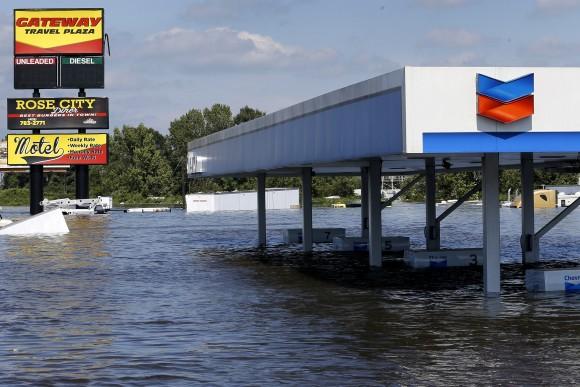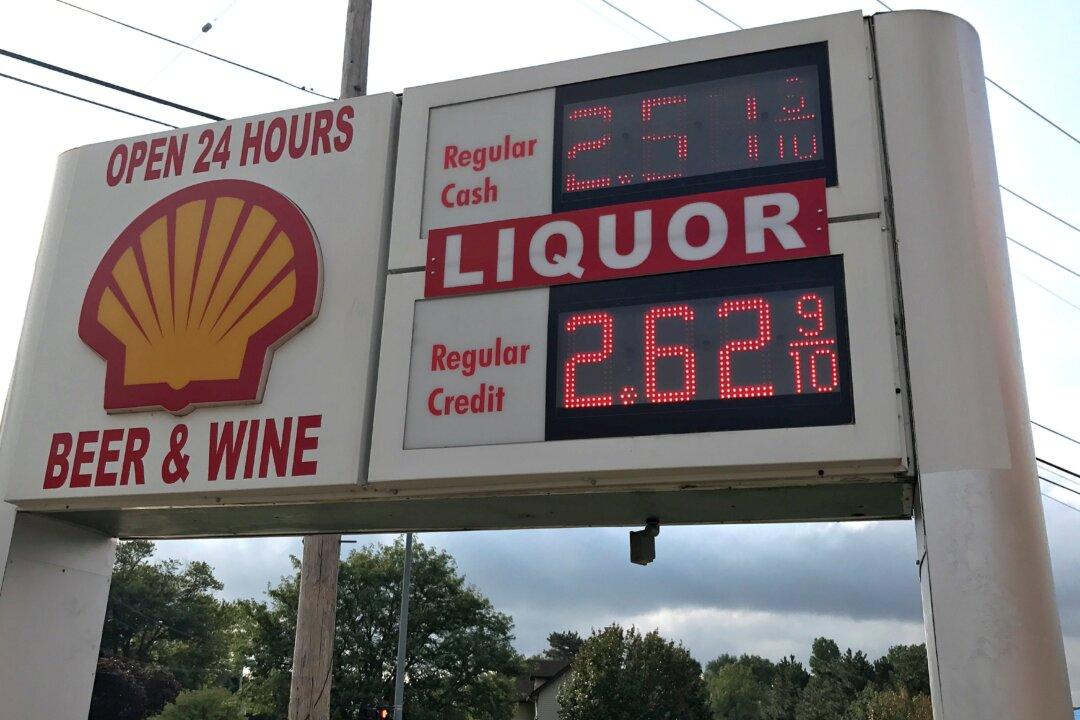HOUSTON/NEW YORK—Retail U.S. gasoline prices hit two-year highs and global shipping routes were scrambled as the nation’s largest refiners remained shut on Friday, even as Storm Harvey lost strength.
Major fuel pipelines feeding the U.S. Northeast and Midwest were either closed or severely curtailed, prompting shortages in some areas and dramatic spikes in wholesale prices.
The storm, which began as a hurricane a week ago, has roiled global fuel markets, and tankers carrying millions of barrels of fuel have been rerouted to the Americas to avert shortages. European refining margins hit a two-year high amid the surge in exports.
Indeed, the effects of the storm will continue for several weeks, if not months, after Harvey hammered the Gulf Coast for days and brought floods that buried Houston and the surrounding area in several feet of water. It knocked out about 4.4 million barrels of daily refining capacity, slightly more than Japan uses daily, and the signs of restarts were tentative.
The nation’s largest refiner, Motiva’s Port Arthur facility, which can handle 600,000 barrels of crude daily, will be shut for at least two weeks, according to sources familiar with plant operations.
Other plants in the Beaumont/Port Arthur area are expected to face similar challenges restarting as waters continued to rise, even as flooding receded in Houston, some 85 miles west.
In Corpus Christi, where Harvey first made landfall, refiners Citgo Petroleum Corp, Flint Hills Resources and Valero Energy Corp were moving to restart their plants, along with the nearby Valero Three Rivers refinery, according to sources.
Benchmark U.S. gasoline prices have surged more than 15 percent since the storm began, but in trading Friday, the contract for October delivery lost 1 percent, the first decline in five days. September’s contract had risen by 25 percent, but stopped trading Thursday.
U.S. crude prices continued to slump along with demand, with the futures contract falling 0.4 percent to $47.02 a barrel.
The national average for a regular gallon of gasoline rose to $2.519 as of Friday morning, according to motorists advocacy group AAA, with even gaudier increases in the U.S. Southeast, which relies heavily on Gulf supplies. South Carolina, for instance, has seen prices rise nearly 30 cents, and prices were up nearly 20 cents in Texas, where fuel shortages were already evident.
The U.S. government tapped its strategic oil reserves for the first time in five years on Thursday, releasing 1 million barrels of crude to a working refinery in Louisiana.
An adviser to President Donald Trump told a White House briefing more oil could be released from reserves.
“We would be very comfortable tapping into that,” homeland security adviser Tom Bossert told reporters.






